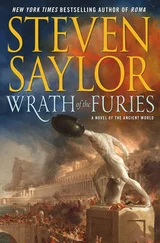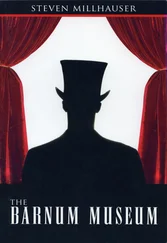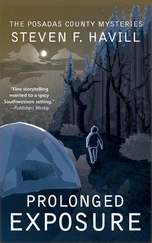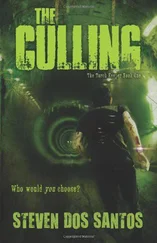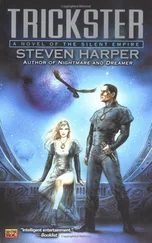Steven Dubner - Freakonomics
Здесь есть возможность читать онлайн «Steven Dubner - Freakonomics» весь текст электронной книги совершенно бесплатно (целиком полную версию без сокращений). В некоторых случаях можно слушать аудио, скачать через торрент в формате fb2 и присутствует краткое содержание. Жанр: Старинная литература, на русском языке. Описание произведения, (предисловие) а так же отзывы посетителей доступны на портале библиотеки ЛибКат.
- Название:Freakonomics
- Автор:
- Жанр:
- Год:неизвестен
- ISBN:нет данных
- Рейтинг книги:3 / 5. Голосов: 1
-
Избранное:Добавить в избранное
- Отзывы:
-
Ваша оценка:
- 60
- 1
- 2
- 3
- 4
- 5
Freakonomics: краткое содержание, описание и аннотация
Предлагаем к чтению аннотацию, описание, краткое содержание или предисловие (зависит от того, что написал сам автор книги «Freakonomics»). Если вы не нашли необходимую информацию о книге — напишите в комментариях, мы постараемся отыскать её.
Freakonomics — читать онлайн бесплатно полную книгу (весь текст) целиком
Ниже представлен текст книги, разбитый по страницам. Система сохранения места последней прочитанной страницы, позволяет с удобством читать онлайн бесплатно книгу «Freakonomics», без необходимости каждый раз заново искать на чём Вы остановились. Поставьте закладку, и сможете в любой момент перейти на страницу, на которой закончили чтение.
Интервал:
Закладка:
“The Lull Before the Storm?” Newsweek, December 4, 1995; Richard Zoglin,
“Now for the Bad News: A Teenage Time Bomb,” Time, January 15, 1996; and Ted Gest, “Crime Time Bomb,” U.S. News & World Report, March 25, 1996. / 4
James Alan Fox’s dire predictions can be found in a pair of government reports:
“Trends in Juvenile Violence: A Report to the United States Attorney General on Current and Future Rates of Juvenile Offending” (Washington, D.C.: Bureau of Justice Statistics, 1996) and “Trends in Juvenile Violence: An Update”
(Washington, D.C.: Bureau of Justice Statistics, 1997). / 4 President Clinton’s fearful comment came during a 1997 speech in Boston announcing new anti-crime measures; see Alison Mitchell, “Clinton Urges Campaign Against Youth Crime,” New York Times, February 20, 1997. / 5–6 The story of Norma McCorvey/Jane Roe: See Douglas S. Wood, “Who Is ‘Jane Roe?’: Anonymous No More, Norma McCorvey No Longer Supports Abortion Rights,” CNN.com, June 18, 2003; and Norma McCorvey with Andy Meisler, I Am Roe: My Life, Roe v.
Wade, and Freedom of Choice (New York: HarperCollins, 1994). / 6 The abortion-crime link is argued in two papers by Steven D. Levitt and John J.
Donohue III: “The Impact of Legalized Abortion on Crime,” Quarterly Journal of Economics 116, no. 2 (2001), pp. 379–420; and “Further Evidence That Legalized Abortion Lowered Crime: A Response to Joyce,” Journal of Human Resources 39, no. 1 (2004), pp. 29–49.7–9
THE REAL REAL-ESTATE STORY: The study measuring how a real-estate agent treats the sale of her own home versus a client’s home is Steven D. Levitt and Chad Syverson, “Market Distortions When Agents Are Better Informed: A Theoretical and Empirical Exploration of the Value of Information in Real Estate Transactions,” National Bureau of Economic Research working paper, 2005. / 7–
8 The lax California auto mechanics are discussed in Thomas Hubbard, “An Empirical Examination of Moral Hazard in the Vehicle Inspection Market,”
RAND Journal of Economics 29, no. 1 (1998), pp. 406–26; and in Thomas Hubbard, “How Do Consumers Motivate Experts? Reputational Incentives in an Auto Repair Market,” Journal of Law & Economics 45, no. 2 (2002), pp. 437–68. /
8 Doctors who perform extra C-sections are examined in Jonathan Gruber and Maria Owings, “Physician Financial Incentives and Caesarean Section Delivery,”
RAND Journal of Economics 27, no. 1 (1996), pp. 99–123.
THE MYTH OF CAMPAIGN SPENDING is told in greater detail in a trio of papers: Steven D. Levitt, “Using Repeat Challengers to Estimate the Effect of Campaign Spending on Election Outcomes in the U.S. House,” Journal of Political Economy, August 1994, pp. 777–98; Steven D. Levitt, “Congressional Campaign Finance Reform,” Journal of Economic Perspectives 9 (1995), pp. 183–
93; and Steven D. Levitt and James M. Snyder Jr., “The Impact of Federal Spending on House Election Outcomes,” Journal of Political Economy 105, no. 1
(1997), pp. 30–53.
EIGHT GLASSES OF WATER A DAY: See Robert J. Davis, “Can Water Aid Weight Loss?” Wall Street Journal, March 16, 2004, which cites an Institute of Medicine report concluding that “there is no scientific basis for the recommendation [of eight glasses of water a day] and that most people get enough water through normal consumption of foods and beverages.”
ADAM SMITH is still well worth reading, of course (especially if you have infinite patience); so too is Robert Heilbroner’s The Worldly Philosophers (New York: Simon & Schuster, 1953), which contains memorable profiles of Smith, Karl Marx, Thorstein Veblen, John Maynard Keynes, Joseph Schum-peter, and other giants of economics.
1. WHAT DO SCHOOLTEACHERS AND SUMO WRESTLERS HAVE IN
COMMON?
THE ISRAELI DAY-CARE STUDY: See Uri Gneezy and Aldo Rustichini, “A Fine Is a Price,” Journal of Legal Studies 29, no. 1 (January 2000), pp. 1–17; and Uri Gneezy, “The ‘W’ Effect of Incentives,” University of Chicago working paper.
MURDER THROUGH THE AGES: See Manuel Eisner, “Secular Trends of Violence, Evidence, and Theoretical Interpretations,” Crime and Justice: A Review of Research 3 (2003); also presented in Manuel Eisner, “Violence and the Rise of Modern Society,” Criminology in Cambridge, October 2003, pp. 3–7.
THOMAS JEFFERSON ON CAUSE-AND-EFFECT: Autobiography of Thomas Jefferson (1829; reprint, New York: G.P. Putnam’s Sons, 1914), p. 156.
BLOOD FOR MONEY: See Richard M. Titmuss, “The Gift of Blood,” Transaction 8 (1971); also presented in The Philosophy of Welfare: Selected Writings by R. M.
Titmuss, ed. B. Abel-Smith and K. Titmuss (London: Allen and Unwin, 1987). See also William E. Upton, “Altruism, Attribution, and Intrinsic Motivation in the Recruitment of Blood Donors,” Ph.D. diss., Cornell University, 1973.
WHEN SEVEN MILLION CHILDREN DISAPPEARED OVERNIGHT: See Jeffrey Liebman, “Who Are the Ineligible EITC Recipients?” National Tax Journal 53 (2000), pp. 1165–86. Liebman’s paper was citing John Szilagyi, “Where Some of Those Dependents Went,” 1990 Research Conference Report: How Do We Affect Taxpayer Behavior? (Internal Revenue Service: March 1991), pp. 162–63.
CHEATING TEACHERS IN CHICAGO: This study, which also provides considerable background on high-stakes testing, is detailed in two papers: Brian A. Jacob and Steven D. Levitt, “Rotten Apples: An Investigation of the Prevalence and Predictors of Teacher Cheating,” Quarterly Journal of Economics 118, no. 3 (2003), pp. 843–77; and Brian A. Jacob and Steven D. Levitt, “Catching Cheating Teachers: The Results of an Unusual Experiment in Implementing Theory,” Brookings-Wharton Papers on Urban Affairs, 2003, pp. 185–209. / 27
The Oakland fifth-grader with the extra-helpful teacher: Based on an author interview with a former assistant superintendent of the Oakland Public Schools.
/ 34–35 Cheating among North Carolina teachers: See G. H. Gay, “Standardized Tests: Irregularities in Administering of Tests Affect Test Results,” Journal of Instructional Psychology 17, no. 2 (1990), pp. 93–103. / 35–37 The story of Arne Duncan, CEO of the Chicago schools, was based largely on author interviews; see also Amy D’Orio, “The Outsider Comes In,” District Administration: The Magazine for K–12 Education Leaders, August 2002; and various Chicago Tribune articles by Ray Quintanilla.
THE UNIVERSITY OF GEORGIA BASKETBALL TEST was made public when the university released 1,500 pages of documents in response to an investigation by the National Collegiate Athletic Association.
CHEATING IN SUMO: See Mark Duggan and Steven D. Levitt, “Winning Isn’t Everything: Corruption in Sumo Wrestling,” American Economic Review 92, no.
5 (December 2002), pp. 1594–1605. / 38–45 There is a lot to know about sumo, and quite a bit can be found in these books: Mina Hall, The Big Book of Sumo (Berkeley, Calif.: Stonebridge Press, 1997); Keisuke Itai, Nakabon (Tokyo: Shogakkan Press, 2000); and Onaruto, Yaocho (Tokyo: Line Books, 2000). / 44
Two sumo whistleblowers die mysteriously: See Sheryl WuDunn, “Sumo Wrestlers (They’re BIG) Facing a Hard Fall,” New York Times, June 28, 1996; and Anthony Spaeth, “Sumo Quake: Japan’s Revered Sport Is Marred by Charges of Tax Evasion, Match Fixing, Ties to Organized Crime, and Two Mysterious Deaths,” reporting by Irene M. Kunii and Hiroki Tashiro, Time (International Edition), September 30,1996.
THE BAGEL MAN: Paul Feldman was looking for a research economist to take an interest in his data, and brought himself to Steven Levitt’s attention. (Several other scholars had passed.) Levitt and then Dubner subsequently visited Feldman’s bagel operation near Washington, D.C. Their research led to an article that was substantially similar to the version of the story published here: Stephen J. Dubner and Steven D. Levitt, “What the Bagel Man Saw,” The New York Times Magazine, June 6, 2004. Levitt is also writing an academic paper about Feldman’s bagel operation. / 47 The “Beer on the Beach” study is discussed in Richard H. Thaler, “Mental Accounting and Consumer Choice,” Marketing Science 4 (Summer 1985), pp. 119–214; also worth reading is Richard H. Thaler, The Winner’s Curse: Paradoxes and Anomalies of Economic Life (New York: Free Press, 1992).
Читать дальшеИнтервал:
Закладка:
Похожие книги на «Freakonomics»
Представляем Вашему вниманию похожие книги на «Freakonomics» списком для выбора. Мы отобрали схожую по названию и смыслу литературу в надежде предоставить читателям больше вариантов отыскать новые, интересные, ещё непрочитанные произведения.
Обсуждение, отзывы о книге «Freakonomics» и просто собственные мнения читателей. Оставьте ваши комментарии, напишите, что Вы думаете о произведении, его смысле или главных героях. Укажите что конкретно понравилось, а что нет, и почему Вы так считаете.

